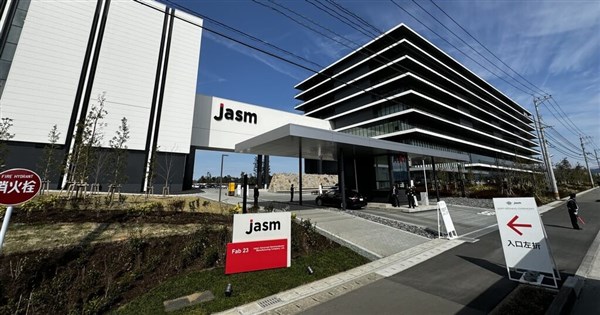ANALYSIS Optimism high for Taiwan-Japan semiconductor tie-up, but concerns lurk – Focus Taiwan
By Alison Hsiao, CNA staff reporter
The opening of Taiwan Semiconductor Manufacturing Co.’s (TSMC) first fab in Japan in February brought great optimism over the new Taiwan-Japan semiconductor alliance and the prospects for reciprocal collaboration between the two sides.
Yet when analysts take a closer look at the investment, they find reasons for both optimism and concern, including whether Taiwan is helping Japan’s semiconductor sector make too rapid a leap that could eventually adversely affect Taiwan.
TSMC’s majority-owned manufacturing subsidiary in Kumamoto, Japan Advanced Semiconductor Manufacturing (JASM), opened its first fab on Feb. 24, less than two years after construction started in April 2022.
Earlier the same month, it announced it would build a second fab — construction of which is to start at the end of this year.
It will be done by the same lineup of TSMC, Sony Semiconductor Solutions Corp., and DENSO Corp. that invested in the first fab, but will also include the participation of Toyota Motor Corp.
The Japanese government’s subsidies account for about 38.14 percent (476 billion Japanese yen) and 36.53 percent (732 billion yen) of TSMC’s investment in the first and second fab, respectively, said Liu Pei-chen (劉佩真), a researcher at the Taiwan Institute of Economic Research.
Complementary partnership

“Other than the unhesitating and quick handout of subsidies, the Japanese government has also been highly supportive in building the surrounding infrastructure for the fabs,” Liu told CNA.
“Examples include the expansion of the local transportation network and the airport, the supply of water and electricity, and also talent cultivation.”
In terms of education, it was reported by local magazine CommonWealth that programs for cultivating future employees in the semiconductor industry have sprung up in the public schools of Kumamoto and Kyushu, once called Japan’s silicon island. This showcases Japan’s aspiration to revive the country’s industry, which 30 years ago was home to six of the top 10 global semiconductor companies.
Liu also mentioned the similar “work culture” in the two countries. As TSMC founder Morris Chang (張忠謀) once said, that means the willingness to dedicate one’s time and energy to work.
For TSMC as a company, the investment in Japan is a response to geopolitical pressure and from clients urging the world’s largest contract chipmaker to diversify the source of chip production, Liu said.
The successful cooperation with Japan also highlighted the delay of subsidies to TSMC promised by the U.S. government, putting pressure on the latter, according to Liu.
For Taiwan’s industry as a whole, government and industry can leverage cooperation to upgrade Taiwan’s semiconductor industry in other areas such as equipment and materials, where Japan’s strength lies, Liu said.
“Japan’s semiconductor equipment production accounts for about 32 percent of global supply, and its semiconductor materials 56 percent, which are areas where Taiwan is relatively weak,” Huang Chin-yung (黃欽勇), founder and president of online tech media Digitimes, said at a talk in February, emphasizing the complementary nature of the bilateral partnership.
Potential rival

However, caution must be exercised, warned Wu Ling-xiang (烏凌翔), convener of the “technology and international relations research committee” of the Taiwan Association of International Relations and CEO of a sci-tech think tank.
Wu raised questions about the technology employed in the two fabs TSMC will operate in Japan.
JASM’s fabs will produce chips using 40, 22/28, 12/16, and 6/7 nanometer process technologies, and “there is also talk of a third fab that could use the cutting-edge 3nm tech, according to a Bloomberg report last November,” Wu said.
Given that it took more than a decade for TSMC to advance the process tech from 40nm to 3nm, “isn’t sharing it with Japan within two to three years a bit hasty?” he asked.
He acknowledged that TSMC’s Arizona fab will also use the relatively advanced 4/5nm process.
“But prior to JASM, Japan’s most ‘advanced’ process was 40nm, while Intel and Global Foundries of the U.S. were already able to mass produce chips with the 7nm and 12nm processes, respectively,” Wu said.
This means Japan’s semiconductor industry has secured a greater leap forward with the help of TSMC, Wu said.
“Japan has great existing infrastructure, work culture, and ergo the potential to replace Taiwan in chip manufacturing, as it has the upstream equipment and materials, and only lacks capabilities in fabrication, packaging and testing,” Wu added.
“With manufacturing going [to Japan] now, packaging is certain to follow.”
He was referring to the Tsukuba research and development facility set up by TSMC in 2022, also with subsidies from the Japanese government, which is about one-hour drive from Tokyo.
“At this facility, new materials will be developed [for advanced packaging] with Japanese equipment and material suppliers,” Wu said.
Another concern arises from Japan’s efforts to enhance semiconductor development, potentially posing a threat to TSMC’s competitiveness.
In August 2022 — only months after TSMC started construction of the first JASM fab — Rapidus, Japan’s “national champion” aiming to manufacture next-generation semiconductors, was set up by the Japanese government and eight Japanese companies, Wu noted.
The Leading-edge Semiconductor Technology Center (LSTC), an R&D center established to support Rapidus, opened in December 2022, he said.
In the same month, Rapidus announced a partnership with IBM Research to turn IBM’s 2nm technology into mass-production-ready silicon, the most advanced process technology now in the industry that TSMC is also working on.
“For TSMC, there were push and pull forces for it to collaborate with Japan,” but from a national perspective, Taiwan’s government needs to keep a more watchful eye on this key asset, Wu said.
Enditem/AW/ls
